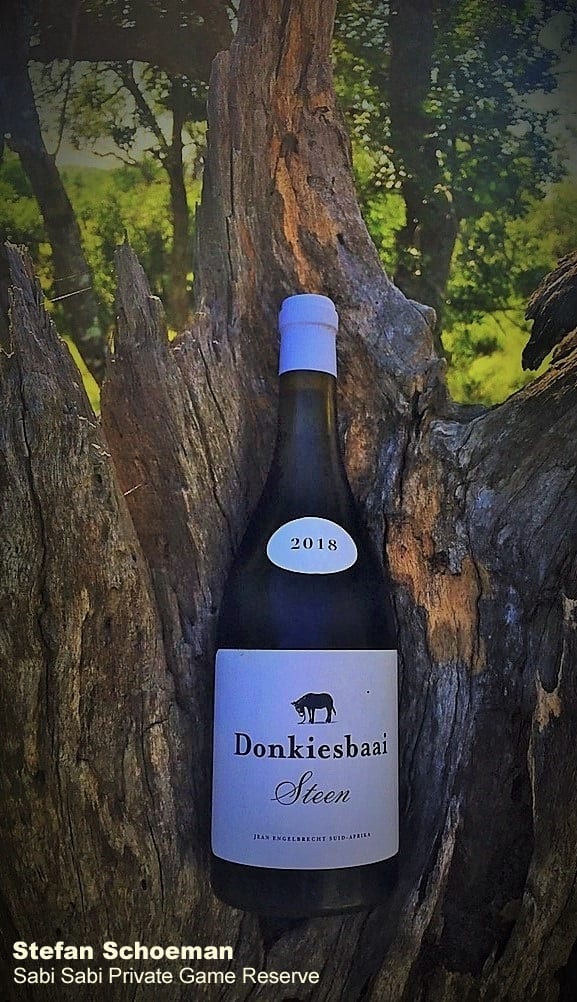Donkiesbaai Steen (Chenin Blanc)
on May 16, 2020“If one glass of wine is good for you, IMAGINE what a whole bottle could do for you...”
A “donkie” is the Afrikaans name for the hard-working and toiling “donkey”. This animal of labour is a common site on many farms in rural South Africa. These animals are often seen pulling carts around transporting people or goods. They are used to pull ploughs and work the fields in and around small domestic settlements in South Africa. Working hard without much gratitude. Situated on the West Coast of South Africa is a small town called “Donkiesbaai”, well I guess a little gratitude shown if a town gets named after you?
It is here where the Engelbrecht family enjoyed numerous family holidays for close to five decades. Jan Engelbrecht, the now owner of Rust en Vrede Wine Estate, decided to pursue the idea of cultivating and producing a Chenin Blanc own to this area. Creating and bottling memories of fun-filled family holidays. Sun, sea, crayfish and white wine. “Steen” was derived from the German word “stein” and is an alternative or pseudonym for Chenin. It is a common belief that “steen” is the Afrikaans word for Chenin when in fact it is well recognised worldwide.
Crayfish and fresh seafood next to the fire was one of the main reasons to produce this wine. Jan loves his freshly caught crayfish and “harders” grilled on an open fire, a typical South African way of cooking meat and fish. Looking for a wine a little more complex than Sauvignon Blanc led to the idea of Chenin! EUREKA!! Great idea, award winning result.
The vines are planted inland from Donkiesbaai in the Piekenierskloof area. The vines are known as “bush vines” and are free growing vines. No irrigation, this means the vines benefit purely from natural rainfall. Once harvested the grapes are transported to the estate where the fermentation, pressing, ageing, and bottling takes place.
The end product is a crisp, slightly acidic, white wine with tropical tones in the bouquet as well as on the palate. On the nose aromas of peach, apricot, melon and a delicate undertone of butterscotch. On the palate, pineapple, nectarine, apricot and ripe peach. The acidity on the palate comes from the zesty undertone of fresh lime.
If you are fortunate and lucky enough to enjoy this with freshly caught crayfish and “harders” around an open fire, on the beach, please know that you have just been scrapped off my Christmas card list. WITH IMMEDIATE effect.
Alternatives to serve with your “Steen” other than “the fruits of the ocean” would be a creamy pasta dish. The acidity of the wine will cut through the creaminess of the dish beautifully. I suggest some saltiness, maybe bacon or ham; truffles or mushrooms for some earthiness; enough cream, loads of Parmesan Cheese and freshly ground black pepper to top it off. I promise, you will not be disappointed.
My personal favourite with this homage to Chenin Blanc grapes, Southern Africa’s “work horse” the donkey, and cooking on an open fire will be Chargrilled Chicken Kebabs. Marinated prior to grill time in lemon juice, chilli, garlic and a little bit of honey. Dressed while on the grill with the leftover marinade until grilled to perfection. Served with a side dish of roasted root vegetable salad. Roasted butternut, sweet potato, parsnip, beetroot and roasted pumpkin seeds tossed in Apple Cider vinaigrette.
What better way to see out the day? Fire roaring, home cooking, family time and a chilled glass of Donkiesbaai. That is what this wine is all about!







